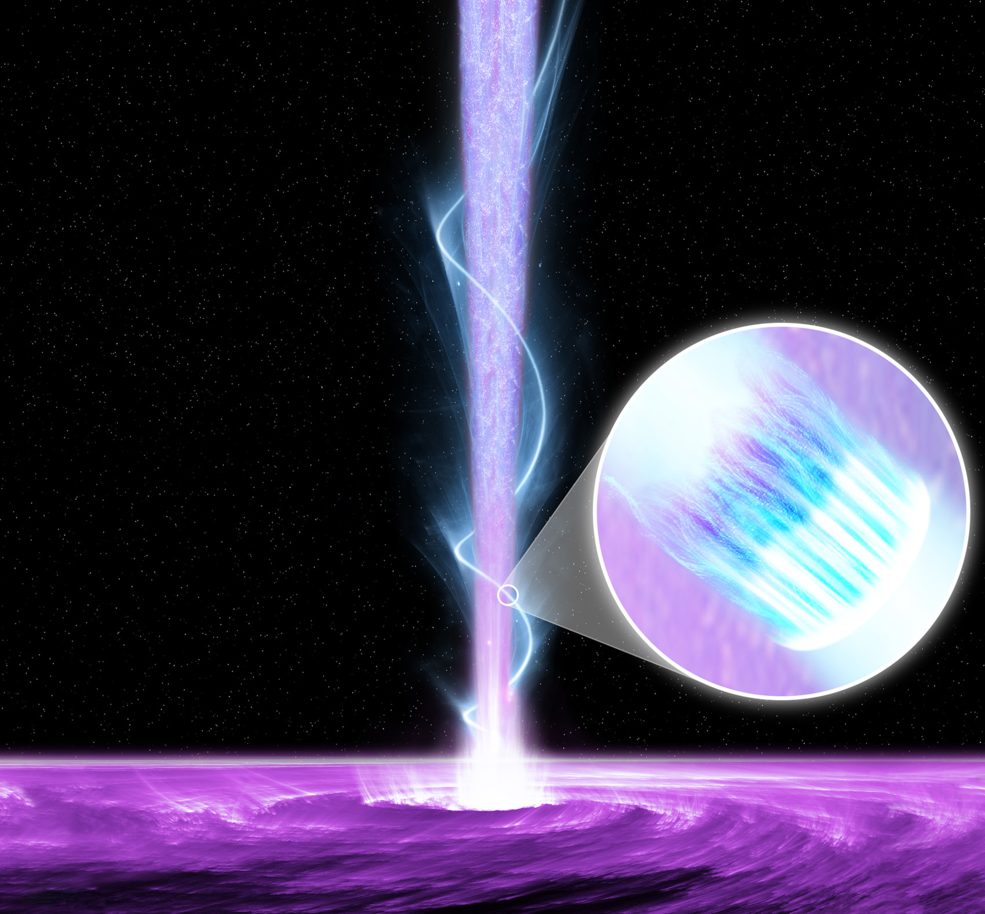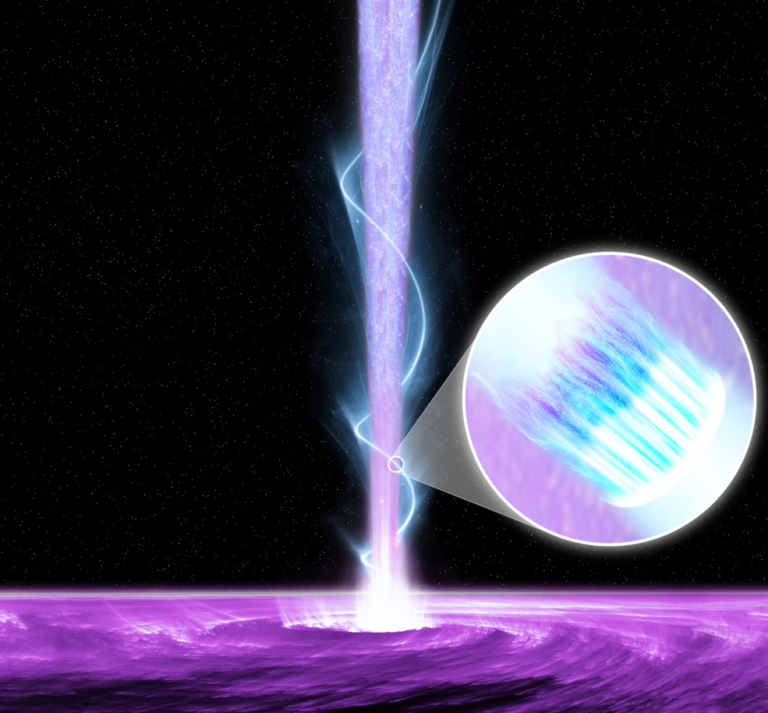Astronomers Buzzing with Excitement Over NASA’s IXPE Discovery of New Blazars
The cosmos is teeming with supermassive black holes, generating robust jets of high-energy particles that unleash intense brilliance across the universe. These peculiar systems, when oriented towards Earth, are known as blazars, captivating scientists’ attention.
Delving into the mysteries of these high-speed, high-energy jets, researchers have turned to NASA’s IXPE (Imaging X-ray Polarimetry Explorer), which successfully launched in December 2021. IXPE focuses on measuring the polarization of X-ray light, revealing the arrangement of electromagnetic waves at X-ray frequencies.
Recently, an international team of astrophysicists unveiled their latest discoveries from IXPE, featuring insights into a blazar named Markarian 421. This extraordinary blazar, located in the Ursa Major constellation and situated approximately 400 million light-years away from Earth, astonished scientists by displaying evidence of a helical magnetic field structure in the region where particles undergo acceleration. These new findings shed light on the mechanisms behind the jet’s accelerated particle movement and energizing phenomena.”

Credits: NASA/Pablo Garcia
Laura Di Gesu, an astrophysicist from the Italian Space Agency and lead author of a groundbreaking study, described Markarian 421 as a familiar subject for high-energy astronomers. They anticipated the blazar would be an excellent candidate for IXPE observations, but the outcomes surpassed their highest expectations. The utilization of X-ray polarimetry by IXPE showcased its capacity to unravel the intricate magnetic field geometry and particle acceleration within relativistic jets.
Published in the latest edition of Nature Astronomy, the study unveils the remarkable findings of the IXPE team’s investigations of Markarian 421. The blazar’s jet, extending millions of light-years in length, emits extraordinary brightness due to particles approaching the speed of light, releasing immense energy as predicted by Einstein’s theories. Blazar jets appear even more luminous because of their orientation towards us, akin to an approaching ambulance siren sounding louder.
Despite decades of research, comprehending the dynamics and emission of blazar jets remains a challenge. Nevertheless, IXPE’s innovative X-ray polarimetry, which examines the electric field’s average direction in light waves, grants an unprecedented perspective of these enigmatic phenomena, their physical structure, and emission sources.
Conventionally, research models depict the typical outflow of powerful jets as a spiraling helix structure, reminiscent of the organization of human DNA. However, scientists were taken aback to discover regions within this helical structure where particles were being accelerated by shocks.
During three extended observations of Markarian 421 in May and June 2022, IXPE detected unexpected variations in the polarization angle. The team expected some polarization direction changes, but the magnitude of these rotations surprised them. The polarization data exhibited an apparent drop to zero between the first two observations, only to reveal that the direction had rotated nearly 180 degrees in just two days. Subsequent observations continued to show the direction of polarization rotating at a consistent rate.
Notably, concurrent measurements in optical, infrared, and radio wavelengths displayed no alterations in stability or structure, even when the polarized X-ray emissions deviated. This led researchers to hypothesize that a shockwave could be propagating along the spiraling magnetic fields within the jet.
The concept of a shockwave accelerating the jet’s particles aligns with theories about another blazar, Markarian 501, which was also observed by IXPE and studied in 2022. However, Markarian 421 presented more conclusive evidence of a helical magnetic field contributing to the shock phenomenon.
Eager to deepen their understanding, Di Gesu, Marshall, and their colleagues aim to conduct further observations of Markarian 421 and other blazars to explore the frequency and nature of these intriguing jet fluctuations.
Di Gesu expressed excitement about the progress in astrophysical jet studies made possible by IXPE. The mission, a collaboration between NASA and the Italian Space Agency, engages partners and science collaborators from 12 countries. Led by NASA’s Marshall Space Flight Center in Huntsville, Alabama, the IXPE mission’s spacecraft operations are managed by Ball Aerospace, headquartered in Broomfield, Colorado, along with the University of Colorado’s Laboratory for Atmospheric and Space Physics in Boulder. The observations of Markarian 421 were complemented with data gathered by partner observatories in the United States, France, Japan, Spain, and Crete.
Source:NASA
Do not forget to share your opinion with us to provide you with the best posts !




0 Comments